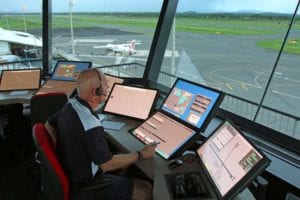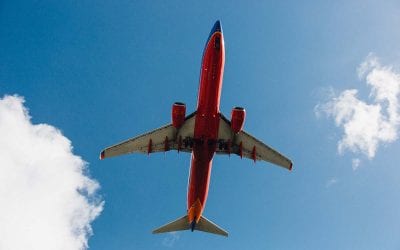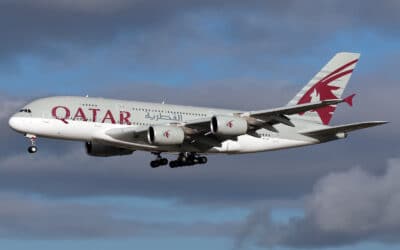The best of times and the worst of times for passengers and airlines.
 In Washington, whenever you speak with members of Congress or their staff, you hear regularly that the aviation system in the country is the best in the world. These congressmen and their all seem to believe this, it seems. But, the FAA is failing.
In Washington, whenever you speak with members of Congress or their staff, you hear regularly that the aviation system in the country is the best in the world. These congressmen and their all seem to believe this, it seems. But, the FAA is failing.
I thought everything was OK, even though passengers were squeezed more tightly than ever to get a few extra folks in airplanes. Airlines always need every dime they get because they are going broke.
At the same time, we hear that life has never been so good for the airlines. Since the end of the pandemic, Americans have been traveling up a storm. This is both good — from a money-making point of view — and an immense pain in the plane and at the airport for the crowds surging to fly. In other words, it is the best of times for passengers and making money and the worst of times for when the FAA is failing.
One would think that most travelers and airline workers would be happy campers. But they are both suffering. Passengers from some of the highest prices they have paid in years, together with higher fees and smaller seats packed more tightly than ever. The airline personnel are waiting on more passengers and infrequent travelers. This means more problems. These come together with a sense of entitlement that has been developed by travelers.
Plus, at the same time, the FAA is having problems.
 Not enough people staffing Federal Aviation Administration (FAA)
Not enough people staffing Federal Aviation Administration (FAA)
We hear about the lack of staffing at the airports, with TSA inspectors, flight attendants, and pilots of all kinds. There are additional staffing problems that have much more to do with safety at the FAA.
During the last FAA bill deliberations, many talks were about changing the air traffic management system. Travelers United, airlines, the unions, and former DOT Secretaries all worked together to get the Air Traffic Management (ATM) modified and privatized. We all discussed the need for better, consistent funding of the FAA, more controllers, newer infrastructure, more control towers, and remote control towers. Though the FAA promised to continue working on these problems, they have failed.
Since the last FAA bill, the administration has not filled many of its leadership positions. There is simply no one in charge. Plus, Congress, which refused to give up any control of the FAA air traffic budget, failed at providing oversight to the FAA. That left the FAA without a regular budget, no leadership, and no direction in the future.
The FAA needs to fix the following problems. There is no roadmap to these changes.
Since Congress has refused to change the basic funding and operation of the FAA, these problems are plaguing the Administration.
The FAA today, as I write this, is 3,000 controllers short. The air traffic system has begged the airlines to stop filling a number of the approved landing and take-off slots in the NYC area so that the air traffic system can operate better.
We need transparency on filling slots. There must be accountability at the FAA’s leadership.
The FAA needs 3rd party training for controllers. We have almost no new controllers in the pipeline where the military and a group of universities used to send hundreds of ATM trainees to the FAA. Though the FAA has produced more trained controllers, they are not “seasoned” and don’t have enough backup. Canada has eight training centers and the USA has only one in Oklahoma.
The replacement rate needed for new controllers is not being met. The FAA only received 1,500 trained controllers last year after retirements were considered.
 Next-gen failures continue.
Next-gen failures continue.
These issues continue through lack of funding and FAA inattention. The paper that the head of Airlines for America waved around five years ago has not been digitized. ATC operators have been faced with more close calls during the recent months.
The New York Times, in late August 2023, released a study of close runway calls over the last three months.
The incidents — highlighted in preliminary F.A.A. safety reports but not publicly disclosed — were among a flurry of at least 46 close calls involving commercial airlines last month alone.
They were part of an alarming pattern of safety lapses and near misses in the skies and on the runways of the United States, a Times investigation found. While there have been no major U.S. plane crashes in more than a decade, potentially dangerous incidents are occurring far more frequently than almost anyone realizes — a sign of what many insiders describe as a safety net under mounting stress.
So far this year, close calls involving commercial airlines have been happening, on average, multiple times a week, according to a Times analysis of internal F.A.A. records, as well as thousands of pages of federal safety reports and interviews with more than 50 current and former pilots, air traffic controllers and federal officials.
The incidents often occur at or near airports and are the result of human error, the agency’s internal records show. Mistakes by air traffic controllers — stretched thin by a nationwide staffing shortage — have been one major factor.
The close calls have involved all major U.S. airlines and have happened nationwide.
Some have made headlines, including one in San Diego on Aug. 11, when a private plane almost landed on top of a Southwest flight. But most, including a close call between two planes in Phoenix four days earlier, have not been disclosed to the public.
The US aviation world needs change. New leadership at the FAA has its hands full.
Travelers United has been watching and hoping that the FAA would change its ways, but that hasn’t happened. We will keep a close eye on the ATM system and hopefully, the powers that be in Congress will do the same and slowly release their grip on the funding process.

READ ALSO:
Traveling this fall? Here’s one thing you absolutely must not do — complain.
How to avoid passing out in-flight at 35,000 feet

Charlie Leocha is the President of Travelers United. He has been working in Washington, DC, for the past 14 years with Congress, the Department of Transportation, and industry stakeholders on travel issues. He was the first consumer representative to the Advisory Committee for Aviation Consumer Protections appointed by the Secretary of Transportation from 2012 through 2018.

 Next-gen failures continue.
Next-gen failures continue.

